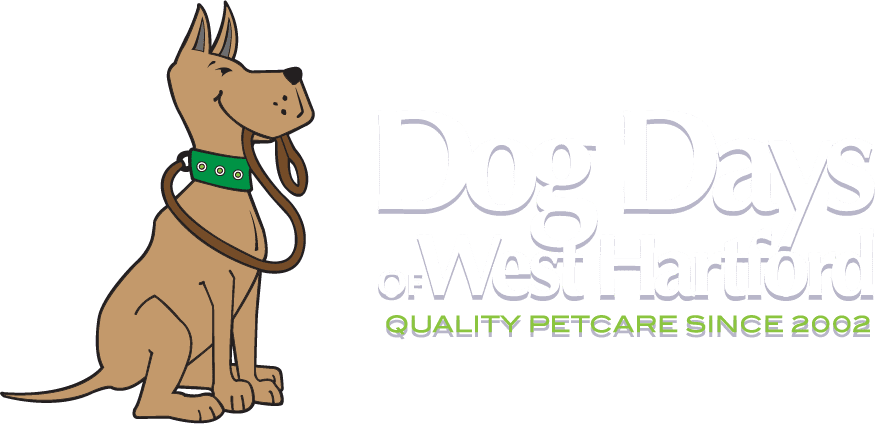Pet Safety Around the House: Foods & Plants Toxic to Pets
When you become a pet owner, you dedicate yourself to looking after the health and well-being of your furry pal—and in return, they’ll give you years of companionship, affection, loyalty, and love. The last thing you want to do is put them in harm’s way, but it’s easy to overlook household foods and plants that pose a danger. Here’s a look at some of the most common hazards you might have around your home.

Unsafe Foods
It’s tempting to give in to those puppy dog eyes with a treat from your plate, but here are the top foods your pet should never eat:
Avocados: Avocados contain a compound called persin, which may lead to vomiting or diarrhea in dogs. Persin is found in the leaves, seed, bark, and fruit of the avocado, and the seed itself presents a significant choking hazard. It’s best to pass on that side of guac for your pooch.
Alcohol: It doesn’t take much alcohol to have a severe effect on your dog’s liver. Even a small amount can lead to vomiting, diarrhea, coordination problems, breathing problems, coma— even death, so take care with your open containers and clean up spills.
Baking Soda, Baking Powder & Other Pantry items: Baking powder and baking soda can be highly toxic, as are many spices like nutmeg and cocoa powder. Ensure your pantry items are out of reach of your pooch to keep them safe.
Caffeine: Caffeine can be fatal to dogs, so keep them away from coffee and tea—even the beans, grounds, and tea bags. This goes for cocoa, chocolate (which is also toxic), sodas, energy drinks, and even some human medicines. If your dog ingests caffeine, get them to the vet as soon as possible.
Chocolate: It’s well known that chocolate is lethal to dogs. It contains a compound called theobromine, which can lead to vomiting, diarrhea, heart problems, tremors, seizures, and death. Theobromine is present in all kinds of chocolate, even white chocolate, and the most dangerous kinds are dark and unsweetened baking chocolate.
Dairy: Like humans, some dogs are allergic to dairy and can lead to skin problems, diarrhea, and other digestive problems. It’s best to avoid dairy to be safe..
Fat Trimmings & Bones: Fat from meats, either cooked or uncooked, can lead to pancreatitis, and bones, as cliche as they might be, are actually a choking hazard for dogs. Furthermore they can splinter and cause blocks or cuts in your dog’s digestive system.
Fruit Seeds & Pits: Many fruit seeds and pits like apple seeds, peach pits, and plum pits, contain small amounts of cyanide, which can be lethal. Pits present a choking hazard or can cause an intestinal blockage as well.
Garlic & Onions: Raw, cooked, powdered, dehydrated—no matter the form, garlic and onions are not good for dogs. This includes other members of the allium family, like shallots, chives, and leeks. They can kill a dog’s red blood cells, leading to anemia. Eating a lot just once can cause poisoning. Steer clear.
Grapes & Raisins: Just a small amount of grapes or raisins can make your dog sick—and even lead to kidney failure. If your dog has uncontrollable vomiting and you think they’ve ingested grapes or raisins, get to the vet ASAP.
Raw Eggs, Meat & Fish: While feeding dogs a raw diet has become popular, the majority of veterinary medical associations don’t agree. Any raw diet runs the risk of food poisoning from E. coli, salmonella and welcomes parasites into their systems.
Salt & Sugar: Too much salt in your pooch’s diet can lead to dehydration or worse, sodium ion poisoning, which can cause digestive problems, tremors, temperatures, seizures, even death. And, just like humans, sugar leads to obesity, diabetes, and dental problems.
Raw Yeast Dough: If your dog gets into raw dough with yeast, it will rise inside his or her stomach, causing a significant amount of painful bloating. But the real danger is from alcohol toxicosis—as the yeast ferments, it makes alcohol which can lead to alcohol poisoning.

Unsafe House Plants
Beautiful to look at, but dangerous for your pup to eat—these are eigh of some of the most common house plants to watch out for:
Aloe Vera: Known for its therapeutic properties, aloe vera actually contains saponin, a mild toxin. If ingested by pets, symptoms can include vomiting, diarrhea, lethargy, changes in urine color, and tremors. While saponin toxicity is usually mild, it can still be life threatening due to the severe dehydration that results from digestive upset.
Amaryllis: A popular holiday plant, the beautiful Amaryllis contains lycorine, which can cause depression, vomiting, diarrhea, hypotension, drooling, and tremors. Like many plants, the bulbs are more toxic than the leaves and flowers. If you must have one, keep it far away from pets.
Ivy Plants: Many ivy plants contain compounds that are moderately toxic to pets. Mouth and stomach irritation, excessive drooling, foaming at the mouth, swelling of the mouth, tongue and lips, vomiting, and diarrhea are all symptoms to look out for. If you’re pooch can’t help but snack, keep ivy out of bounds.
Jade Plant: The Jade is a popular variety of succulent that, while generally not lethal, should be avoided by pets. Accidental ingestion can lead to digestive upset, lethargy, loss of appetite, and in extreme cases, convulsions and decreased heart rate.
Lily Plants: Be they Peace Lilies, Calla Lilies, Tiger Lilies, or Lily of the Valley, lilies of all kinds present a danger to pets. Though technically they aren’t all in the same family, they all contain various toxins that can pose serious risks to your pets. Some symptoms are milder, like burning in the mouth and throat, drooling, and choking, but many are far more dangerous, like breathing difficulties, convulsions, renal failure, permanent organ damage, even death.
Philodendron: The philodendron family of plants are popular thanks to their attractive looks and easy care, but they do present a level of mild to moderate toxicity to pets. Symptoms of philodendron poisoning include oral irritation, pain and swelling of mouth, tongue and lips, excessive drooling, vomiting, difficulty swallowing, and rarely, constriction of airways.
Sago Palm: With its easy care and tropical appeal, the Sago Palm is a popular houseplant— and one of the most dangerous to pets. All parts of it are highly poisonous, the seed being the most toxic. The presence of cycasin throughout the plant can lead to drooling, vomiting, bloody stools, internal hemorrhaging, liver failure, and death. Do not wait if you suspect accidental ingestion, go to the veterinary hospital immediately.
Snake Plant: The snake plant is another easy-to-grow plant that’s especially popular not only for it’s dramatic appeal, but because it’s fairly hard to kill. Like aloe vera, the snake plant contains saponin, which, when ingested, leads to mild to moderate symptoms like drooling, nausea, vomiting and diarrhea, or more the more severe risks involved with extreme dehydration.
While some dangers to our pets, like chemicals and medications, are obvious dangers to our pets, many seemingly innocent foods and plants pose equal threats. While this list mentions some of the most common, it’s not exhaustive. If you have any doubts about a food or houseplant, do your research, ask your vet, and make sure it’s safely out of your pet’s purview.
